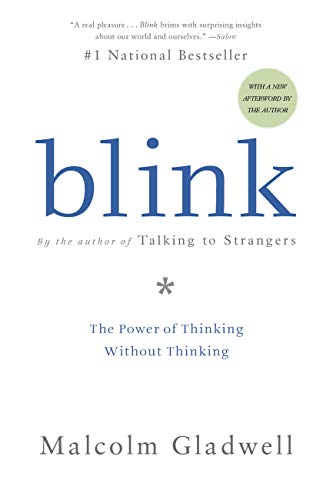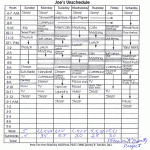Print | Kindle(eBook) | Audiobook
In Blink: The Power of Thinking Without Thinking, author Malcolm Gladwell explores how we think without thinking, about choices that seem to be made instantly in the blink of an eye-that actually aren’t as simple as they seem. Gladwell examines snap judgments, which are the split-second decisions we make unconsciously.
Decisions made very quickly can be every bit as good as decisions made cautiously and deliberately.
Favourite Takeaways
The first task of Blink is to convince you of a simple fact: decisions made very quickly can be every bit as good as decisions made cautiously and deliberately.Blink is not just a celebration of the power of the glance, however.
“I’m also interested in those moments when our instincts betray us. ”
Our unconscious is a powerful force. But it’s fallible. It’s not the case that our internal computer always shines through, instantly decoding the “truth” of a situation. It can be thrown off, distracted, and disabled. Our instinctive reactions often have to compete with all kinds of other interests and emotions and sentiments. So, when should we trust our instincts, and when should we be wary of them? Answering that question is the second task of Blink.
“The key to good decision-making is not knowledge. It is understanding. We are swimming in the former. We are desperately lacking in the latter.”
When our powers of rapid cognition go awry, they go awry for a very specific and consistent set of reasons, and those reasons can be identified and understood. It is possible to learn when to listen to that powerful onboard computer and when to be wary of it. The third and most important task of this book is to convince you that our snap judgments and first impressions can be educated and controlled. I know that’s hard to believe.
“The power of knowing, in that first two seconds, is not a gift given magically to a fortunate few. It is an ability that we can all cultivate for ourselves.”
Blink is concerned with the very smallest components of our everyday lives — the content and origin of those instantaneous impressions and conclusions that spontaneously arise whenever we meet a new person or confront a complex situation or have to make a decision under conditions of stress.
Thin-slicing
“Thin-slicing” refers to the ability of our unconscious to find patterns in situations and behavior based on very narrow slices of experience.
The Power of the Glance
Thin-slicing is not an exotic gift. It is a central part of what it means to be human. We thin-slice whenever we meet a new person or have to make sense of something quickly or encounter a novel situation. We thin-slice because we have to, and we come to rely on that ability because there are lots of hidden fists out there, lots of situations where careful attention to the details of a very thin slice, even for no more than a second or two, can tell us an awful lot.
In basketball, the player who can take in and comprehend all that is happening around him or her is said to have “court sense.” In the military, brilliant generals are said to possess “coup d’oeil” — which, translated from the French, means “power of the glance”: the ability to immediately see and make sense of the battlefield. Napoleon had coup d’oeil. So did Patton.
To be a successful decision maker, we have to edit.
- When we thin-slice, when we recognize patterns and make snap judgments, we do this process of editing unconsciously.
“A commander does not need to know the barometric pressure or the winds or even the temperature. He needs to know the forecast. If you get too caught up in the production of information, you drown in the data.”
Priming
What we think of as free will is largely an illusion: much of the time, we are simply operating on automatic pilot, and the way we think and act — and how well we think and act on the spur of the moment — are a lot more susceptible to outside influences than we realize.
Priming is a phenomenon whereby exposure to one stimulus influences a response to a subsequent stimulus, without conscious guidance or intention.
The Problem with Market Research
The Edsel started out ugly, and it’s still ugly. By the same token, there are movies that people hate when they see them for the first time, and they still hate them two or three years later. A bad movie is always a bad movie. The problem is that buried among the things that we hate is a class of products that are in that category only because they are weird. They make us nervous. They are sufficiently different that it takes us some time to understand that we actually like them.
The problem with market research is that often it is simply too blunt an instrument to pick up this distinction between the bad and the merely different.
Market research isn’t always wrong, of course. If All in the Family had been more traditional — and if the Aeron had been just a minor variation on the chair that came before it — the act of measuring consumer reactions would not have been nearly as difficult. But testing products or ideas that are truly revolutionary is another matter, and the most successful companies are those that understand that in those cases, the first impressions of their consumers need interpretation.
We like market research because it provides certainty — a score, a prediction; if someone asks us why we made the decision we did, we can point to a number. But the truth is that for the most important decisions, there can be no certainty. Kenna did badly when he was subjected to market research. But so what? His music was new and different, and it is the new and different that is always most vulnerable to market research.
All the Best in your quest to get Better. Don’t Settle: Live with Passion.



Comments are closed.